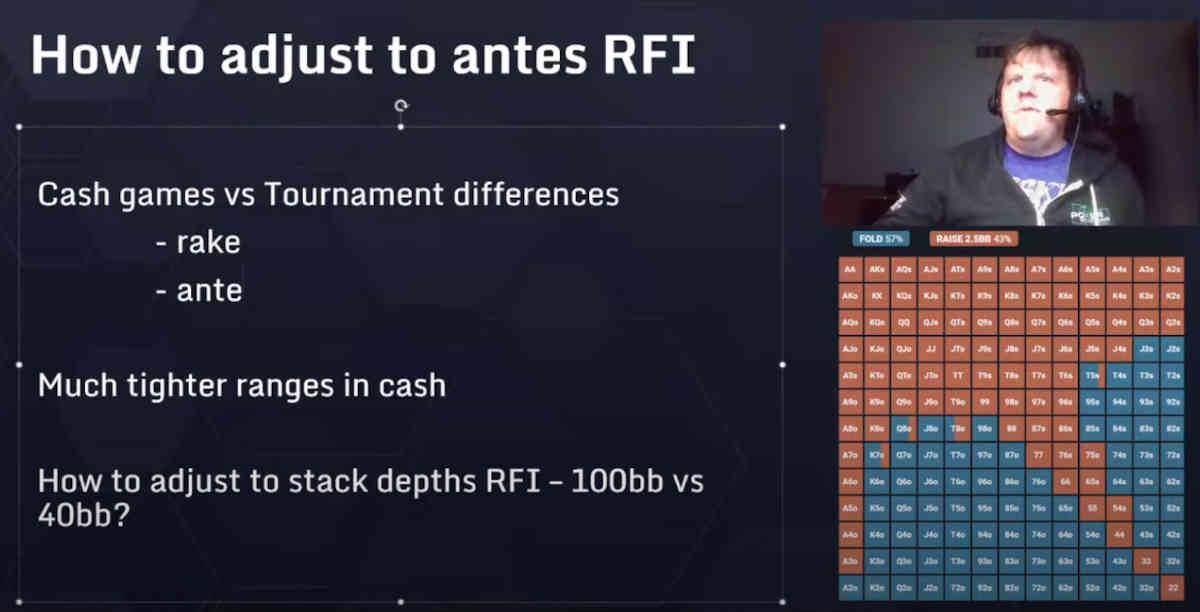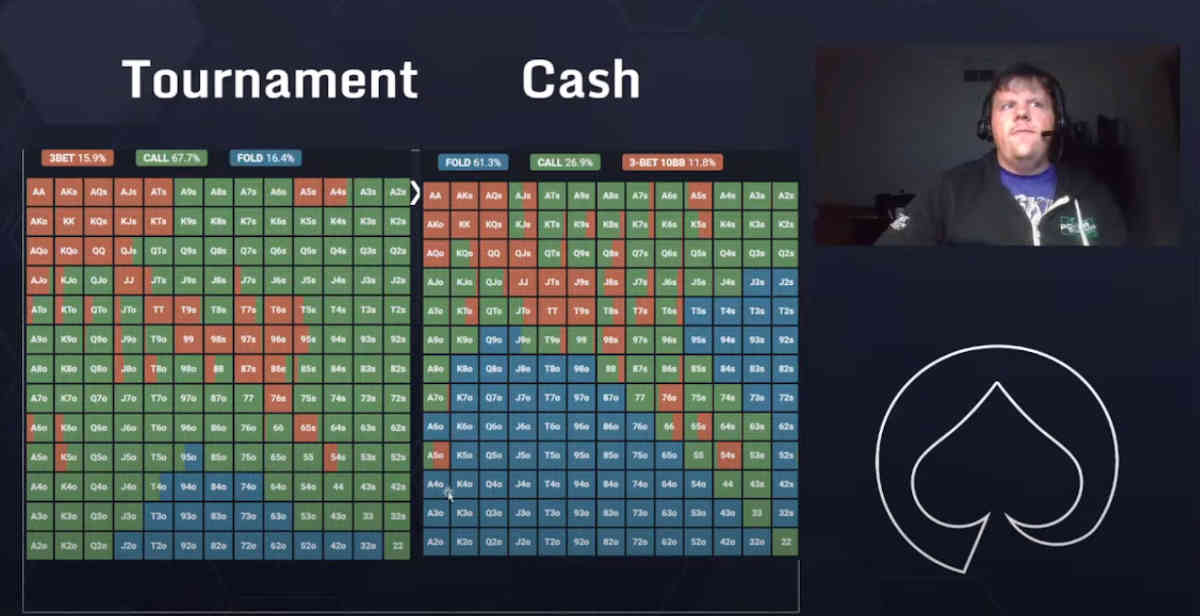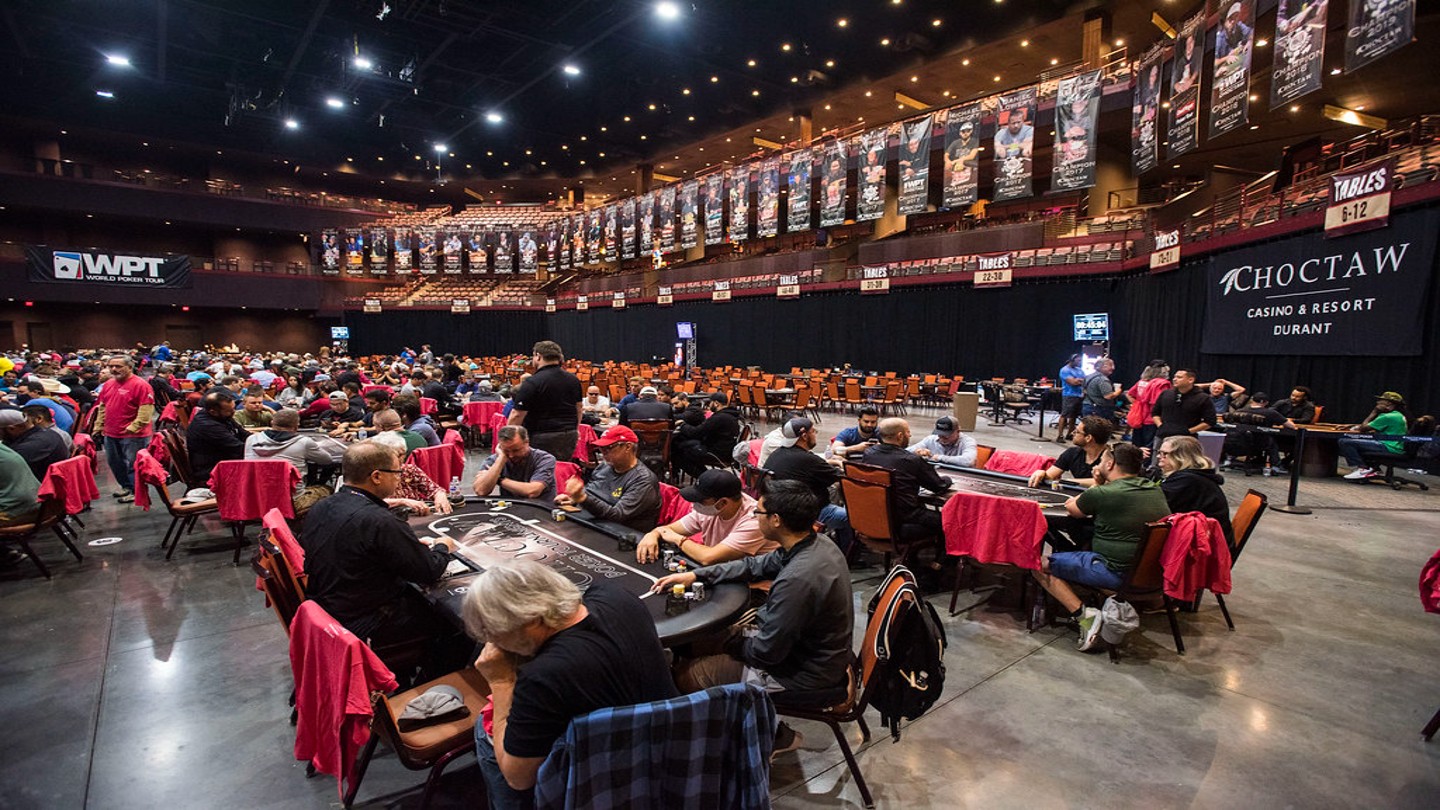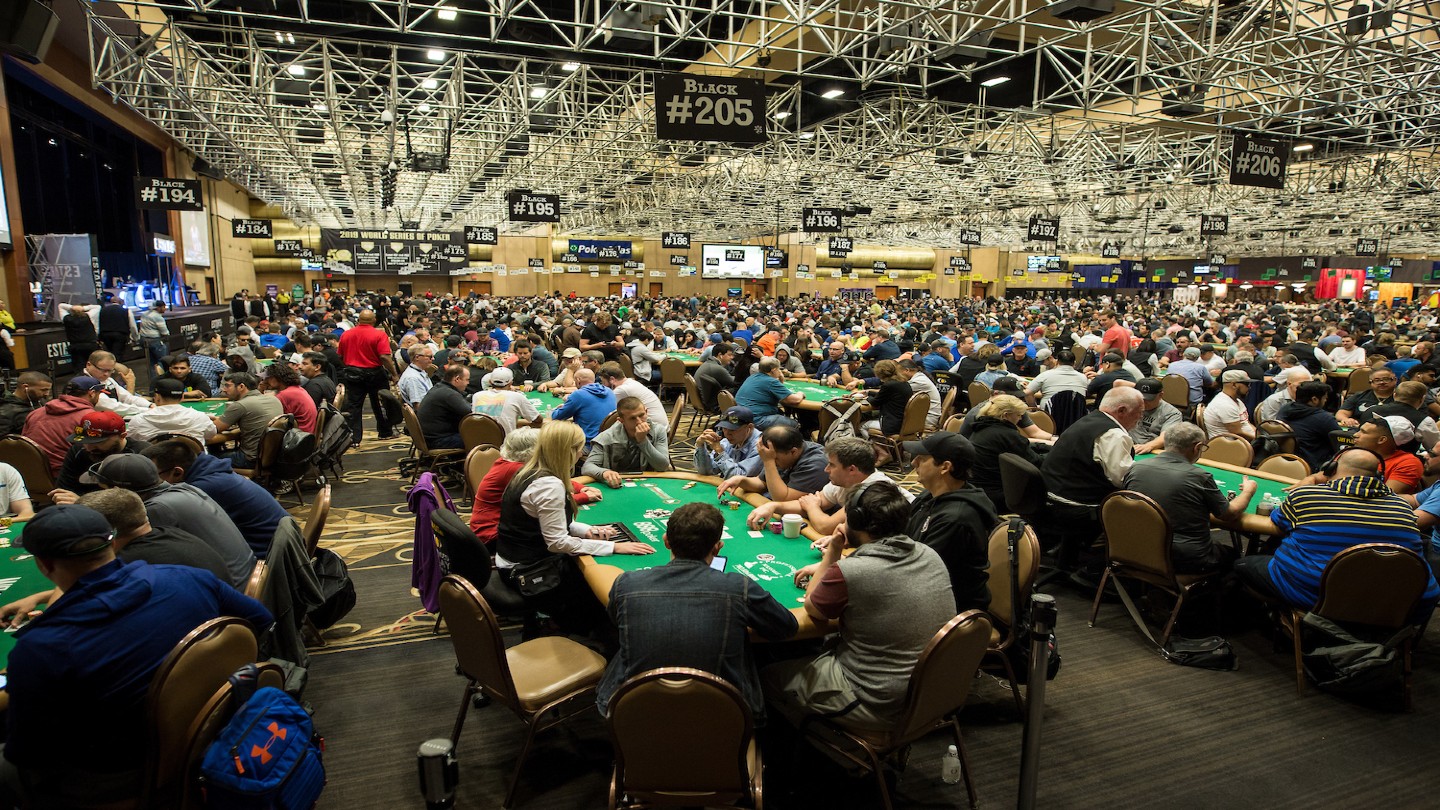Preflop Adjustments for Small Stakes MTTs and Cash Games

6 minutes
Last Updated: December 6, 2023
If you want to increase your edge at the tables even further, make sure to check the Pokercoaching training site.
…
Preflop is the most important street because you get to play it every hand. Some people will argue that the river is the most important, but not every hand gets to the river. However, you do make a preflop decision in every single hand.
It’s virtually impossible to play postflop without having solid preflop fundamentals. You need to learn your preflop ranges, which will help you understand what poker hands you can and can’t have and how they correlate with different boards.
Preflop charts are a useful tool to help you develop this understanding, but you shouldn’t be trying to just memorize and copy them. Instead, approach them with the view of trying to understand and implement them, which will make the learning curve much easier.
Raising First In
Preflop charts contain a lot of poker hands. You don’t really need to memorize all of them. Instead, you should try and memorize the bottoms of the ranges.
Remember the floors of your ranges in different positions, and this will make things much easier. Learn them by suited and offsuite hands, and that’s pretty much all the memorization you need to do. Anyone can do this, and you don’t need to be some poker wizard to achieve this.
After the flop, this helps you better understand what boards you should be continuing and what boards you should be checking, as they don’t help your preflop range.
Rake, Antes, and Stack Size Adjustments
Rake plays a big role in how you construct your preflop ranges. When rake makes up a significant portion of the pot (i.e., at lower stakes), you will want to play much tighter and focus heavily on value hands.
This is similar to ICM and risk premium in tournament poker – it’s expensive to bust out, so you play tighter. When money is being taken out of the pot, you also need to adjust and play tighter.
In tournaments, when antes are involved, you’re getting a better price to steal pots without showdowns. Pots are bigger, so you’ll want to raise wider than in cash games without antes.

In cash games, there are no antes (usually), and there is a rake, so you have every reason to stay on the tighter side of your range.
Finally, the stack depth is another major factor. When playing 100 big blinds, you want to play more connected and suited hands that can flop flushes, straights, and good draws. The deeper you are, the more you want to flop a straight flush draw or a nut flush draw.
At lower blind depths, it’s more important to flop a top pair. High-card, offsuite hands go up in value because stack to pot ratio gets lower and, with it, the threshold to stack off.
Facing Raises When Not in the Big Blind
There are two main aspects to preflop play. The first one is when you’re doing the raising, and we’ve covered it in the first part of this article. But what about when facing a raise (outside of the big blind, as we’ll cover that in the next section)?
When facing a raise, we have more options, so this is where people make more mistakes. To help you avoid them, you can utilize the idea known as the “gap concept.”
The gap concept suggests that you should be continuing with a much tighter range than your raising range. You don’t just have to be stronger than your opponent, but you also have players still to act behind you.
But what is the best way to continue when facing a raise – is it calling or 3-betting?
Most poker players will adhere to one of two strategies to answer this question – liner or polar strategy, depending on several factors.
- Liner strategy – you simply go from top to bottom, raising the best hands and not the worst hands – similar to RFI ranges.
- Polar strategy – you raise your best and worst hands that are good enough to continue with, and call with your medium strength hands. The reason we’re raising the worst hands we want to continue with is because we can get some better hands to fold.
In general, when playing with shorter stacks, you’ll want to use polar strategies because when you have 40 big blinds and you 3-bet to seven blinds, it is a very attractive proposition for your opponent to shove on you.
When you are deep stacked, you can play some hands like TJs since you don’t have to fold your equity – you can call and play on.
What’s the Most Profitable Position in Poker?
While you may not think so at first, big blind is actually the most profitable position in poker. This is due to the fact that you’ll be able to make so many profitable calls in this position due to the great pot odds you’ll be getting.
So, you need to learn how to play from big blind efficiently and profitably.
A big mistake people make is defending the same range against a 3x or a 4x raise, but there is a very significant difference in your hand selection here.

When playing suited hands, you don’t have to worry about this too much, but your selection of offsuit hands must be much tighter, and you should defend much less with these hands. You should be very sensitive to the raise size with your offsuite hands.
Other important factors to consider when deciding how to continue from the big blind are:
- Position of the raise – you can defend wider against the button raise because they have a wider range, and your hands have more equity. By the same token, you should be playing much tighter against UTG.
- Rake – for the reasons already mentioned, the higher the rake, the tighter you should play.
- Antes – the bigger the antes, the wider your defense ranges should be, as you’ll be fighting for bigger pots.
- Stack depth – the deeper you are, the more you want to be suited and connected. With deeper stacks, you want to defend with hands that have the potential to flop really strong.
- Skill of the opponent – the better your opponent, the tighter you should play from the big blind.
How to Study Preflop?
Developing a good preflop understanding is crucial to your poker success. Everything that comes after stems from your preflop decisions, and there is simply no way about it. So, how should you approach studying this area of the game?
Studying some preflop poker ranges is a great way to warm up for a session. This provides an extra benefit of getting you into the right mindset before you sit down to play.
As a poker player, you need to warm up your brain, get yourself thinking in the poker mode, and doing some raise first in and vs. RFI drilling is a great way to do just that and regularly work on your preflop game every day that you play.


















